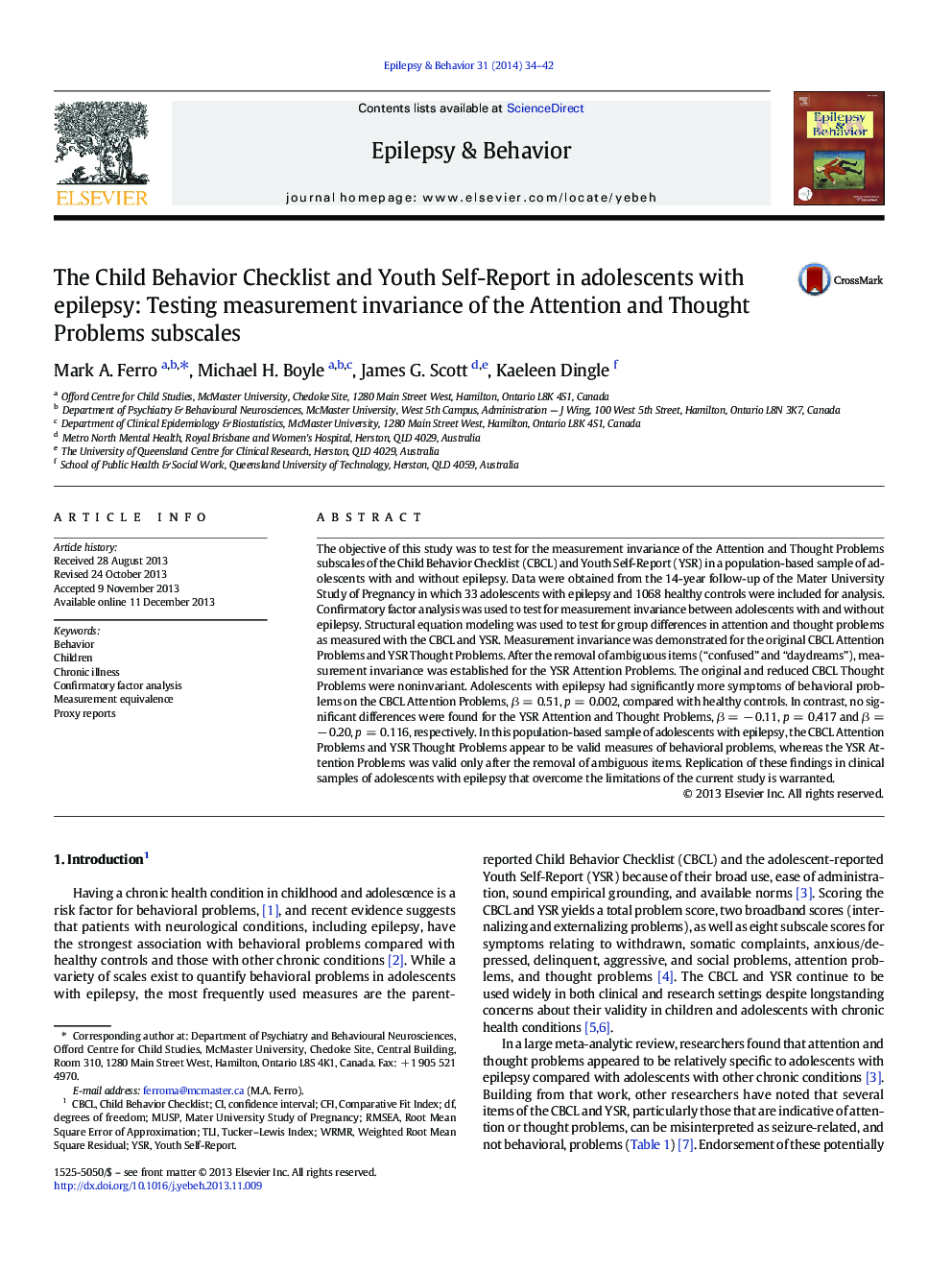| Article ID | Journal | Published Year | Pages | File Type |
|---|---|---|---|---|
| 6012511 | Epilepsy & Behavior | 2014 | 9 Pages |
â¢We tested the measurement invariance of the CBCL/YSR Attention and Thought Problems.â¢Invariance was seen for the CBCL Attention Problems and YSR Thought Problems.â¢After the removal of ambiguous items, invariance was seen for the YSR Attention Problems.â¢The original and reduced CBCL Thought Problems was noninvariant.â¢Youth report similar problems as controls; mothers report more attention problems.
The objective of this study was to test for the measurement invariance of the Attention and Thought Problems subscales of the Child Behavior Checklist (CBCL) and Youth Self-Report (YSR) in a population-based sample of adolescents with and without epilepsy. Data were obtained from the 14-year follow-up of the Mater University Study of Pregnancy in which 33 adolescents with epilepsy and 1068 healthy controls were included for analysis. Confirmatory factor analysis was used to test for measurement invariance between adolescents with and without epilepsy. Structural equation modeling was used to test for group differences in attention and thought problems as measured with the CBCL and YSR. Measurement invariance was demonstrated for the original CBCL Attention Problems and YSR Thought Problems. After the removal of ambiguous items (“confused” and “daydreams”), measurement invariance was established for the YSR Attention Problems. The original and reduced CBCL Thought Problems were noninvariant. Adolescents with epilepsy had significantly more symptoms of behavioral problems on the CBCL Attention Problems, β = 0.51, p = 0.002, compared with healthy controls. In contrast, no significant differences were found for the YSR Attention and Thought Problems, β = â 0.11, p = 0.417 and β = â 0.20, p = 0.116, respectively. In this population-based sample of adolescents with epilepsy, the CBCL Attention Problems and YSR Thought Problems appear to be valid measures of behavioral problems, whereas the YSR Attention Problems was valid only after the removal of ambiguous items. Replication of these findings in clinical samples of adolescents with epilepsy that overcome the limitations of the current study is warranted.
